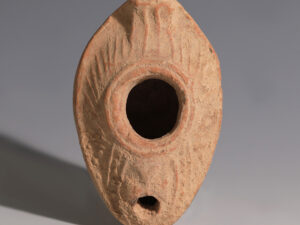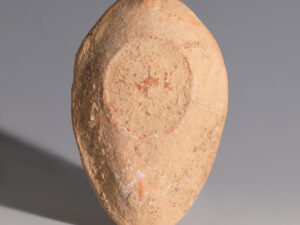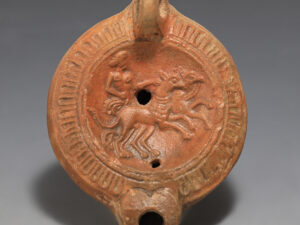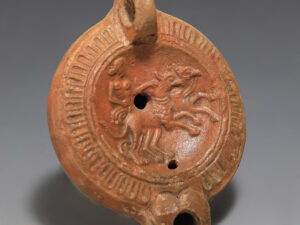The first oil lamps appeared in the Near East during the third millennium, where the circular, saucer-like shape and single pinched wick-point would define the form of oil lamps for the following two thousand years. It was not until the Greek craftsmen of the sixth century BC would develop the closed lamp form, with a rim that encroached over the lip of the oil dish and a single small orifice left as an opening. The addition of ornamentation would occur in the earliest Roman lamps of the 3rd century BC when mould-made lamps increased in popularity, and options for embellishment were maximised.
Oil lamps have been found in domestic, religious and funerary archaeological contexts. This confirming their use in ritualistic practices in houses, sanctuaries and cemeteries during Greek, Roman and Byzantine periods. References to lamps in spells involving vessel divination, for instance, have been found both in Greek and Demotic.
The ‘frog lamp’ style, which is similarly datable to fourth or fifth century Egypt, possesses a mould-formed body, and is decorated with abstracted natural iconography. This oil lamp typology enjoyed immense popularity during the Roman period and during the rise of Christianity, despite affiliation with pagan occultism. It is thought such imagery of frogs, wheat and floral imagery had direct correlation with the wetlands surrounding the Nile, and that such lamps were used as votive gifts to bring about fertile harvests and optimal flooding seasons.
To read more about the evolution of oil lamps in Antiquity, please refer to this relevant blog post: Lighting the Way






















